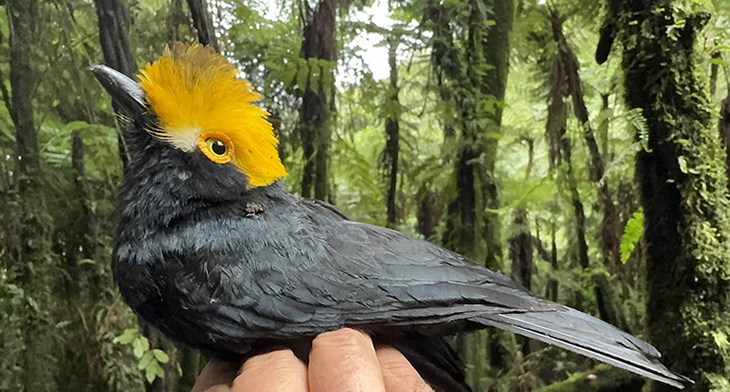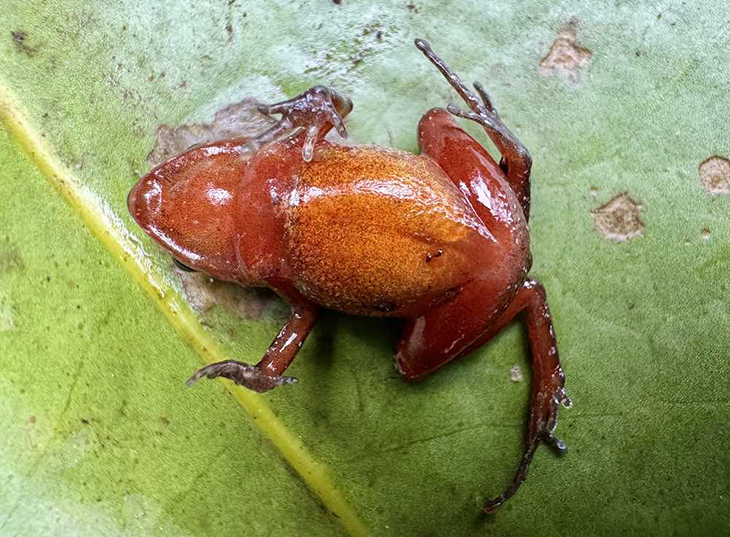
In a remarkable breakthrough, scientists have finally captured photographic evidence of a bird species in Africa that had eluded sight for almost two decades.
The elusive bird, known as the Yellow-crested Helmetshrike, had been designated as a ‘lost bird’ by the American Bird Conservancy due to its prolonged absence from observation. This significant discovery was made by a team of researchers from the University of Texas at El Paso (UTEP) during a six-week expedition to the eastern Democratic Republic of the Congo.
Ornithologist and UTEP assistant professor, Michael Harvey, Ph.D., said, “It was a mind-blowing experience to come across these birds. We knew they might be possible here, but I was not prepared for how spectacular and unique they would appear in life.”
Leading the expedition were Harvey and UTEP Professor Eli Greenbaum, Ph.D., accompanied by ornithologist Matt Brady and a team of Congolese researchers from the Centre de Recherche en Sciences Naturelles.
Their arduous journey involved trekking on foot for 75 miles through the challenging terrain of the Itombwe Massif mountains, meticulously studying various bird, amphibian, and reptile species along the way.
Amidst their exploration of the cloud forests nestled within the mountain slopes, Harvey and Brady were astonished to stumble upon the Yellow-crested Helmetshrike – a visually striking bird adorned with a vibrant yellow “helmet” atop its black plumage. The encounter revealed approximately 18 helmetshrikes, observed in lively and noisy groups amidst the mid-layer of forest vegetation across three distinct sites during the expedition.
Described as endemic to the western slopes of the Albertine Rift of Central Africa, this species had remained elusive primarily due to the region’s historical inaccessibility, often marred by conflict and security concerns. However, recent improvements in safety have enabled researchers to penetrate these once-restricted areas.
“This inspires hope that perhaps the species still has a reasonably healthy population in the remote forests of the region,” Harvey said.
Yet, the threat of mining, logging, and agricultural activities encroaching into the forests of the Itombwe range looms large, prompting discussions among the team and conservation organizations regarding urgent measures to safeguard the habitat of the helmetshrikes.
“Right now is a golden opportunity to protect these tropical forests, so that we don’t lose species like the helmetshrike before they are known and studied,” said Harvey.
The expedition, conducted between December 2023 and January 2024, resulted in additional significant findings.

Beyond the remarkable rediscovery of the Yellow-crested Helmetshrike, the expedition unveiled other significant findings. The herpetology team, for instance, stumbled upon the Red-bellied Squeaker Frog (Arthropleptis hematogaster), a species not sighted since the 1950s – a testament to the biodiversity concealed within these remote landscapes.
This expedition marked Greenbaum’s eleventh venture into the Democratic Republic of the Congo, a journey that inspired him to document his experiences in his book, Emerald Labyrinth: A Scientist’s Adventures in the Jungles of the Congo.
The groundbreaking discoveries made during this expedition hold immense promise in shedding light on the ecological richness of the region, serving as a beacon of inspiration for students and scientists worldwide.
The dean of the College of Science at UTEP expresses hope that these findings will galvanize efforts to preserve biodiversity hotspots like the Itombwe Massif and ignite curiosity and passion for conservation among future generations.
What are your thoughts? Please comment below and share this news!
True Activist / Report a typo


